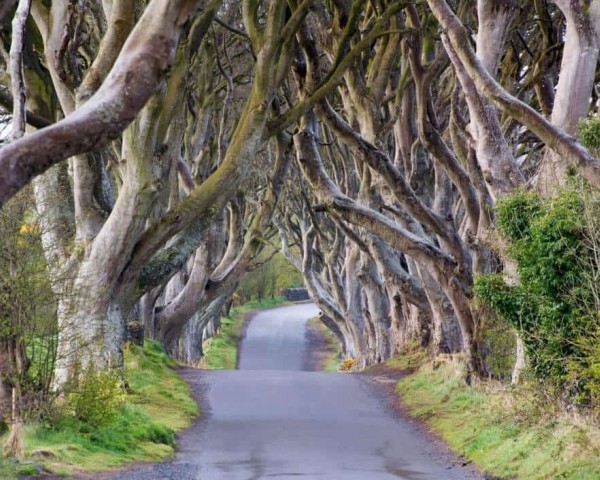El Salvador tourism has reported an increase in numbers
El Salvador is developing a fascinating tourism narrative, very different from what it looked like just a few years ago. According to Tourism Minister Morena Valdez, the nation is on track to exceed expectations by the end of 2025, potentially receiving an unprecedented number of visitors.
Valdez cited growing international confidence, improved security, and significant private investment as key factors positioning El Salvador tourism as a shining star in Central America—a place that offers breathtaking beaches, fascinating culture, and plenty of opportunities.
“It’s not just growth; it’s transformational,” Valdez emphasized. October saw significant gains, and near-capacity bookings for November and December suggest a booming hospitality sector. Hotels and hostels, especially in the historic center of San Salvador and increasingly in areas 1 and 2 of Surf City, are overcrowded, turning what was once a seasonal trend into a constant year-round activity.
A jump from 3 to a remarkable 4 million viewers
The data shows a rapid increase. As of September 2025, El Salvador has already received nearly 2.9 million visitors, reaching 3 million in early October. Current forecasts point to a remarkable 4 million visitors by December, effectively doubling pre-pandemic figures and marking a historic achievement for the nation. This increase is driven not only by a renewed interest in international travel but also by a targeted effort to restore confidence in the country’s safety and appeal.
Valdez credited this positive trend to a combination of factors: simplified visa procedures, improved infrastructure, and a strategic marketing effort that showcases El Salvador’s diverse attractions—from hiking volcanoes to world-class surfing spots. For a nation often overshadowed by its neighbors, these achievements represent a remarkable turnaround, positioning El Salvador as a landmark in the Americas.
High-impact events boost El Salvador tourism
The end of 2025 promises a vibrant atmosphere, with a variety of major events designed to attract visitors and expand the tourism base. Surfing fans will gather for three notable international competitions: two in La Libertad and one in Punta Mango, celebrated for its exceptional waves that have placed El Salvador prominently on the international surfing stage. Additionally, an increasing number of anglers, mostly from the United States, are signing up for international marlin fishing tournaments, promising exciting catches and social opportunities.
Adding a touch of sports excitement, an exhibition game featuring legendary retired Spanish soccer players—including legendary Salvadoran player Jorge “Magico” Gonzalez—will fill the stadium and generate excitement among fans. Such gatherings are not just for fun; They stimulate the economy, benefiting not only hotels but also restaurants, tour operators, and local craft markets. As Valdez points out, they raise El Salvador’s profile, turning first-time tourists into loyal ambassadors.
Significant hotel and infrastructure investment
Behind the scenes, private sector confidence is driving structural growth. In San Salvador, the JW Marriott project is progressing rapidly, aiming to be Central America’s most innovative luxury hotel upon completion. This trend is not unique, with developers investing significantly in the surf town, the capital, and the revitalized historic center, where plans for high-end hotels are expected.
“Tourism investment does not happen by accident; it is the result of building trust over three years,” Valdez clarified. Public projects are equally noteworthy. The planned leisure area on the Costa del Sol will offer resort-quality amenities at affordable prices, catering to families and individual travelers looking for the Pacific.
The Salvadoran Institute of Tourism (ISTU) has renovated the Cabanas del Cerro Verde, turning them into eco-friendly retreats that combine comfort with environmental protection in the stunning highlands.
Neighbors flock to the north
El Salvador’s magnetic bridge echoes through the region. Neighbors from Central America, especially from Honduras and Guatemala, come in large numbers, helped by their proximity and good roads. Last October, during Morzanica Week – a shared heritage celebration – hotels along the coast were completely full, Honduran and Guatemalan cars were seen all over Atacco, Ahuachapan, Apanica region, and the beautiful Ruta de las Flores. Itineraries are also changing, as visitors now easily combine colonial town explorations, maze-like tours, and shore excursions, creating multi-day trips to experience the country’s best compact attractions.
Interestingly, even countries as far away as Panama and Costa Rica are now visited, often starting their journey in the historic center of San Salvador. Attracted by its urban renewal—including walkable sidewalks, illuminated street art, and safe nightlife—these travelers find a cultural energy that’s both exciting and safe. This broad interest strengthens regional ties, with tourism serving as a kind of soft power diplomat.
When sustainability meets prosperity
However, in the midst of all this excitement, there is also the promotion of environmental care. In popular spots like Punta Rocca, a popular surfing spot, there are strict rules – no alcohol is allowed, and everyone must take their own trash with them – to ensure the area remains beautiful for generations to come. This approach also includes programs where locals and visitors work together to protect nature, from mangrove forests to corals.
The overall benefit is significant. El Salvador’s tourism, along with construction, has become a major driver of the country’s economy, creating jobs, attracting international investment, and improving the country’s standing in the world. From surf instructors in El Zonet to cooks in San Salvador’s trendy restaurants, job opportunities are spreading, strengthening local communities, and even reducing the desire to leave the country. It is an inclusive approach that welcomes all people, including backpackers and senior travelers, and emphasizes prioritizing sustainability so that El Salvador’s natural environment remains protected.




Post Comment